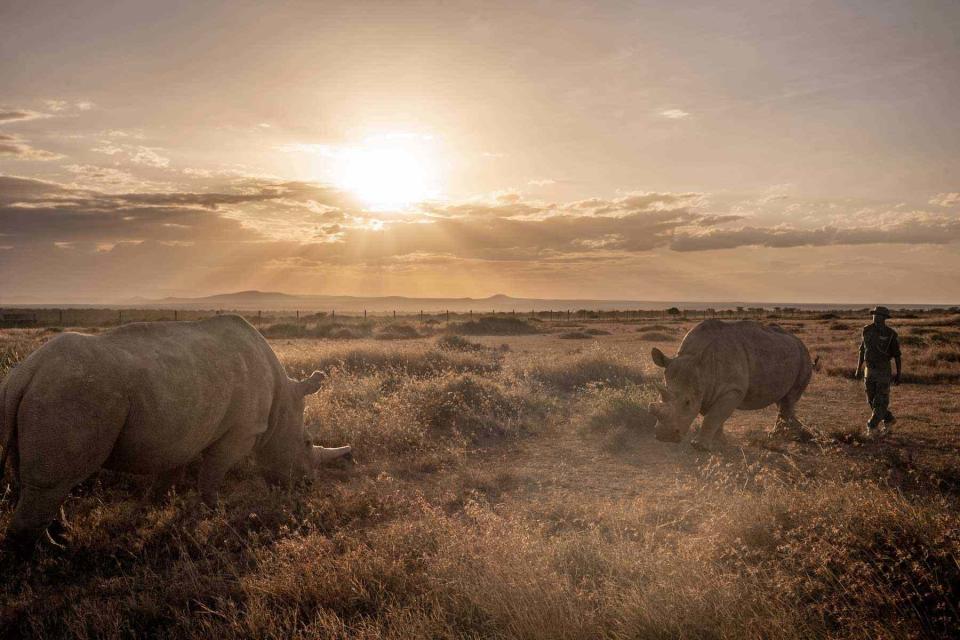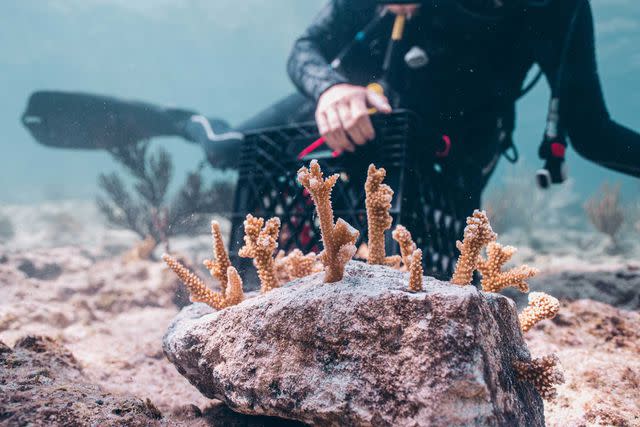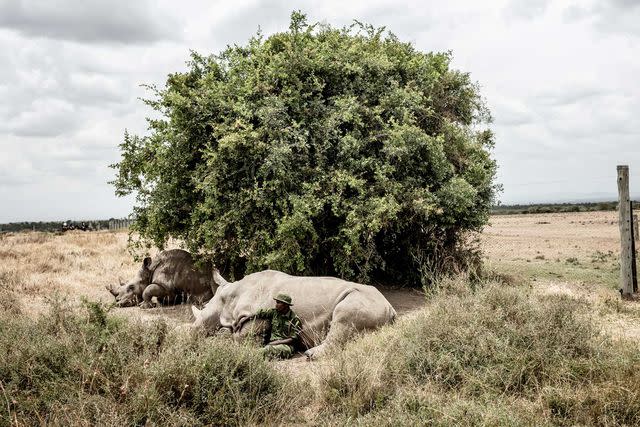In a Race Against Extinction, 2 Organizations Are Using Smart Science to Save Animal Species
These organizations were recognized in the 2023 Global Vision Awards for their efforts, which range from coral reefs in the Bahamas to the grasslands of Kenya.

Justin Mott/Courtesy of Ol Pejeta Conservancy
The world’s last northern white rhinos, Najin and Fatu, at Kenya’s Ol Pejeta Conservancy.The Travel + Leisure Global Vision Awards aim to identify and honor companies, individuals, destinations, and organizations taking strides to develop more sustainable and responsible travel products, practices, and experiences. Not only are they demonstrating thought leadership and creative problem-solving, they are taking actionable, quantifiable steps to protect communities and environments around the world. What's more, they are inspiring their industry colleagues and travelers to do their part.
Marrying wildlife conservation with goal-oriented tourism shows that passionate travelers can see the world — and awe-inspiring animals — while also contributing positively to fragile ecosystems. The dedicated conservationists honored in the 2023 Global Vision Awards take creative, research-backed approaches to their work that simultaneously protect endangered species and help travelers learn about the local environment. For example, one honoree below actively works with local cruise lines and tourism boards to regrow coral reefs at up to 50x the natural speed, while a special conservancy in Africa invites visitors to actively engage in valuable preservation projects. — T+L Editors

Harry Lee/Courtesy of Coral Vita
A Coral Vita diver checks coral growth in the Bahamas.Coral Vita
Understanding the value of coral reefs is key to saving them, according to Coral Vita cofounders Sam Teicher and Gator Halpern. An estimated $2.7 trillion in goods and services is generated annually by coral reefs, while supporting the livelihoods of up to 1 billion people and 25 percent of marine life. “But more than 80 percent of Caribbean corals have been lost in the past few decades,” Teicher says.
Coral Vita, a company based in Freeport, Bahamas, is working to change that. The team grows native coral species at its farm on the Grand Lucayan Waterway and installs healthy fragments back into wild reefs on the south shore of Grand Bahama.
“The core part of our business is selling restoration services to customers that depend on tourism, coastal protection, and fisheries,” Teicher says. The team is in talks with resorts, cruise lines, and local tourism operators about partnering to plan large-scale coral installations and hopes to one day offer people the ability to buy biodiversity credits to help fund their work.
In the meantime, travelers can tour the farm to gain insight into the scientific process while helping fund the conservation efforts. Tours $20 per person. — Hannah Selinger

Justin Mott/Courtesy of Ol Pejeta Conservancy
White rhinos Najin and Fatu, with one of their caretakers at Kenya’s Ol Pejeta Conservancy.Ol Pejeta Conservancy
Kenya’s Ol Pejeta Conservancy exemplifies how tourism and wildlife conservation can be mutually beneficial. Located on 110,000 acres of the Laikipia Plateau, with views of Mount Kenya, the sanctuary is home to several upscale camps and safari cottages.
Guests staying on site can see endangered species, such as the black rhinoceros, Grevy’s zebra — and, most notably, the world’s last northern white rhinoceroses, two females named Najin and Fatu. Visitors can also participate in preservation activities like tracking and monitoring radio-collared lions, meeting the antipoaching K-9 unit, and even shadowing the conservancy’s armed rangers during exercise drills.
Scientists at Ol Pejeta are currently working with partners across the globe to pull the northern white rhino from the brink of extinction. To date, they have created 22 embryos using assisted reproductive technology, including IVF. The next goal: transferring them to two surrogate females of a closely related rhino subspecies and, ultimately, bringing them to full term.
In addition to this critical project, the conservancy also coordinates with surrounding communities on sustainable water management and land use, from building energy-efficient cooking stoves for local homes to helping to establish nurseries to foster native tree growth. — Tom Vanderbilt
For more Travel & Leisure news, make sure to sign up for our newsletter!
Read the original article on Travel & Leisure.

